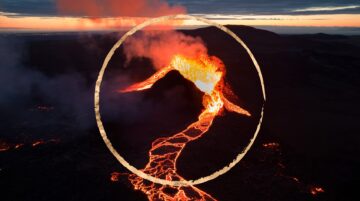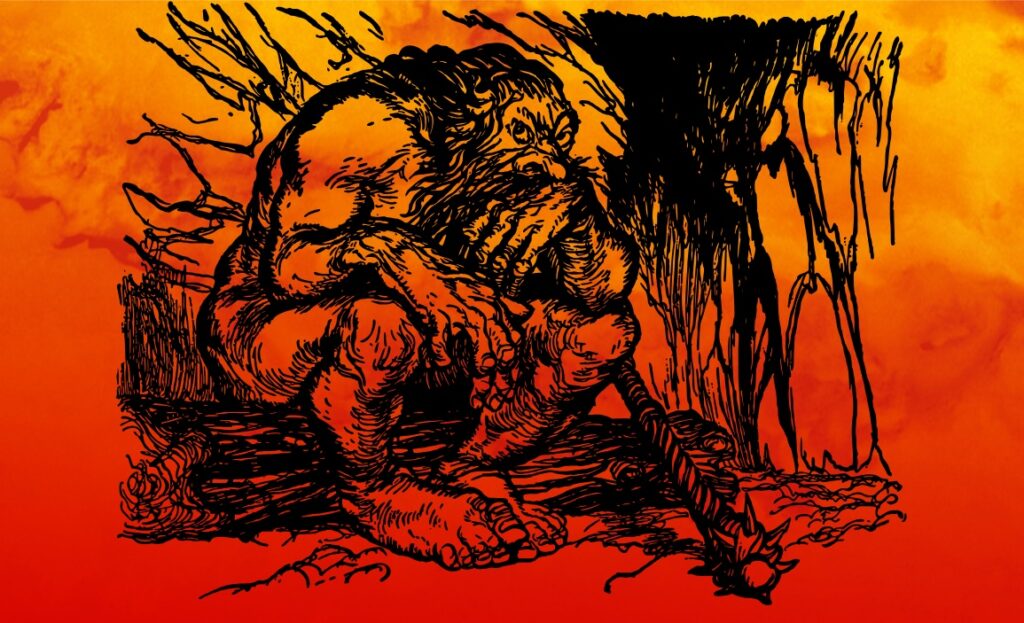
The Orcs of J. R. R. Tolkien’s Lord of the Rings trilogy have become one of the most iconic creatures in fantasy literature, but unlike the equally famous Elves and Dwarves, Orcs are entirely the creation of Tolkien.
They are in essence a modern monster, built on Tolkien’s fears of, and dislike for, all the worst aspects of humanity that lead to war. Peter Jackson’s movie trilogy, however, portrays them as animalistic monsters whose strength and ferocity make them more beast than man. Comparing the two depictions of one of the most famous evil minions in literature can reveal what concept inspired terror in both Tolkien and Jackson’s time.
One of Jackson’s first changes to the Orc mythos is to break down the Dark Lord’s servants into physical categories like members of an animal kingdom. In the books, “Orc” is merely another name for “Goblin,” and Tolkien even “derived the word orc from Old English believing it refers to a kind of evil spirits,” emphasizing their demonic, supernatural nature (Milakovic, 2022).
The films, however, depict them as separate creatures, with goblins being the smaller, more numerous counterpart to the sturdy, man-sized Orcs. Jackson’s dividing of the two words into separate creatures hints at a sort of animal kingdom for the Orcs and Goblins, with the pecking order established by size and strength.

The symbolism of the Orcs can also be found in the alteration of Orc intelligence. In The Fellowship of the Ring, the Goblins hiss and snarl like animals when cornering the heroes, and the Uruk-Hai Lurtz roars bestially when dueling Aragorn. Book Goblins are treated with more of a cunning yet lazy intelligence.
Tolkien even pins the Goblins as responsible for World War I bombs, stating, “It is not unlikely that they invented some of the machines that have since troubled the world, especially the ingenious devices for killing large numbers of people at once, for wheels and engines and explosions always delighted them…” (Tolkien, The Hobbit, 42). Jackson does rectify this with the Orc strategist, Gothmog, in The Return of the King, but the initial impression of the Uruk-Hai emphasizes that Orcs are more beast than man.
Jackson also differs in his treatment of the Orcs’ independent streak. In both versions, Orcs are the semi-rebellious minions of the villains, but the films depict their moments of rebellion as primal, instinctual aversions to loyalty or self-restraint. Grishnakh in The Two Towers film wants to kill Merry and Pippin because he is hungry, while in the book, he suspects that they have the One Ring and may even desire it for himself.
Later on, Gorbag suggests to Shagrat, “You and me’ll slip off and set up somewhere on our own with a few trusty lads, somewhere where there’s good loot nice and handy, and no big bosses” (The Two Towers, 378), while their scene in the film version of Return of the King excludes this conversation entirely.
In both cases, the ambitious cunning of a renegade soldier in the books becomes the animalistic urge of a monster in the films. Overall, Tolkien’s Orcs are demonic representations of cruelty and selfishness in wartime, while Jackson’s Orcs prey upon the primal fear of hungry, monstrous beasts.
Works Cited
Milakovic, R. (2022, July 18). Orcs vs. Goblins: History, Differences & Culture. Fiction Horizon. https://fictionhorizon.com/lord-of-the-rings-middle-earth-differences-between-orcs-and-goblins/
Tolkien, J. R. R. (2012). The Hobbit. Houghton Mifflin Harcourt.
Tolkien, J. R. R. (2020). The Two Towers: Being the Second Part of the Lord of the Rings. Mariner Books / Houghton Mifflin Harcourt.




